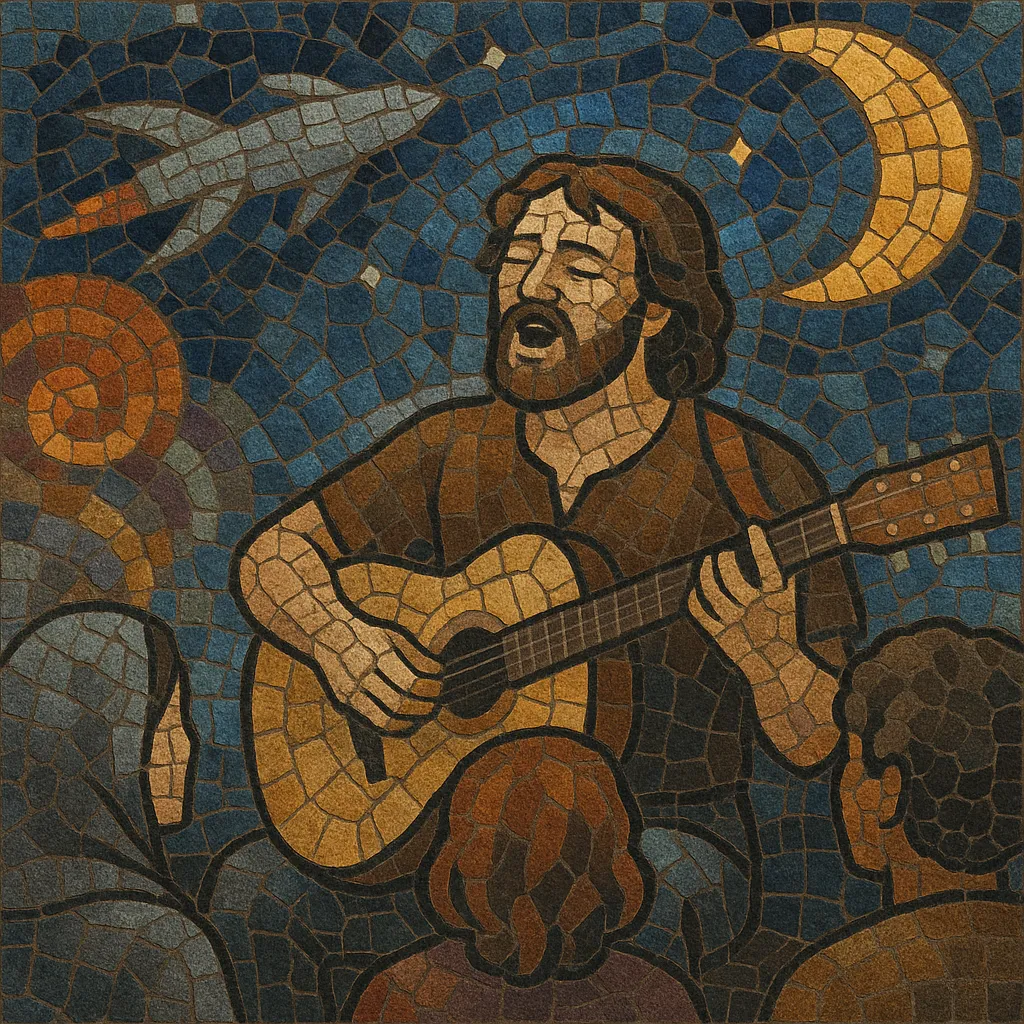Filk is a participatory, folk-derived song tradition that grew within science fiction, fantasy, and fandom communities.
It favors acoustic instruments, sing‑along choruses, and narrative lyrics that explore speculative themes—spaceflight, magic, technology, fandom in‑jokes, and literary or media references.
The style ranges from humorous parodies and topical “news of fandom” songs to original ballads with serious, mythic, or scientific subject matter. Performances often happen in informal circles at conventions, where anyone can take a turn, and community interaction is as central as the music itself.
The term “filk” arose in science-fiction fandom in the 1950s—most often traced to a fortuitous typo of the word “folk” in a fan publication that stuck as a tongue-in-cheek label. Fans brought guitars and songs to hotel hallways and rooms at conventions, sharing topical and parodic lyrics about books, films, and the culture of fandom itself.
As fandom expanded, so did song circles and original composition. By the late 1970s and early 1980s, dedicated labels and cassette releases helped define a shared repertoire, and filk concerts became regular items on convention schedules. The Ohio Valley Filk Fest (OVFF) launched the Pegasus Awards in 1984, recognizing excellence in filk songwriting and performance and helping formalize community standards.
The 1990s saw dedicated filk conventions and tracks across North America and Europe, including FilKONtario (Canada), GAFilk (U.S.), and UK/European gatherings. The Usenet group rec.music.filk and fan zines facilitated lyric sharing, collaborative writing, and archiving, while studio albums and live recordings documented circle favorites.
Online platforms (web forums, LiveJournal, YouTube, Bandcamp) broadened the audience and enabled remote collaboration. Filk intersected with adjacent “geek music” scenes, influencing geek rock and interacting with comedy- and parody-focused acts. Yet the heart of the genre remains the participatory circle: acoustic, inclusive, narrative-rich songs performed for and with a community.
Start with a singable, memorable melody and clear storytelling. Filk prioritizes audience connection, intelligible lyrics, and choruses that invite participation.


